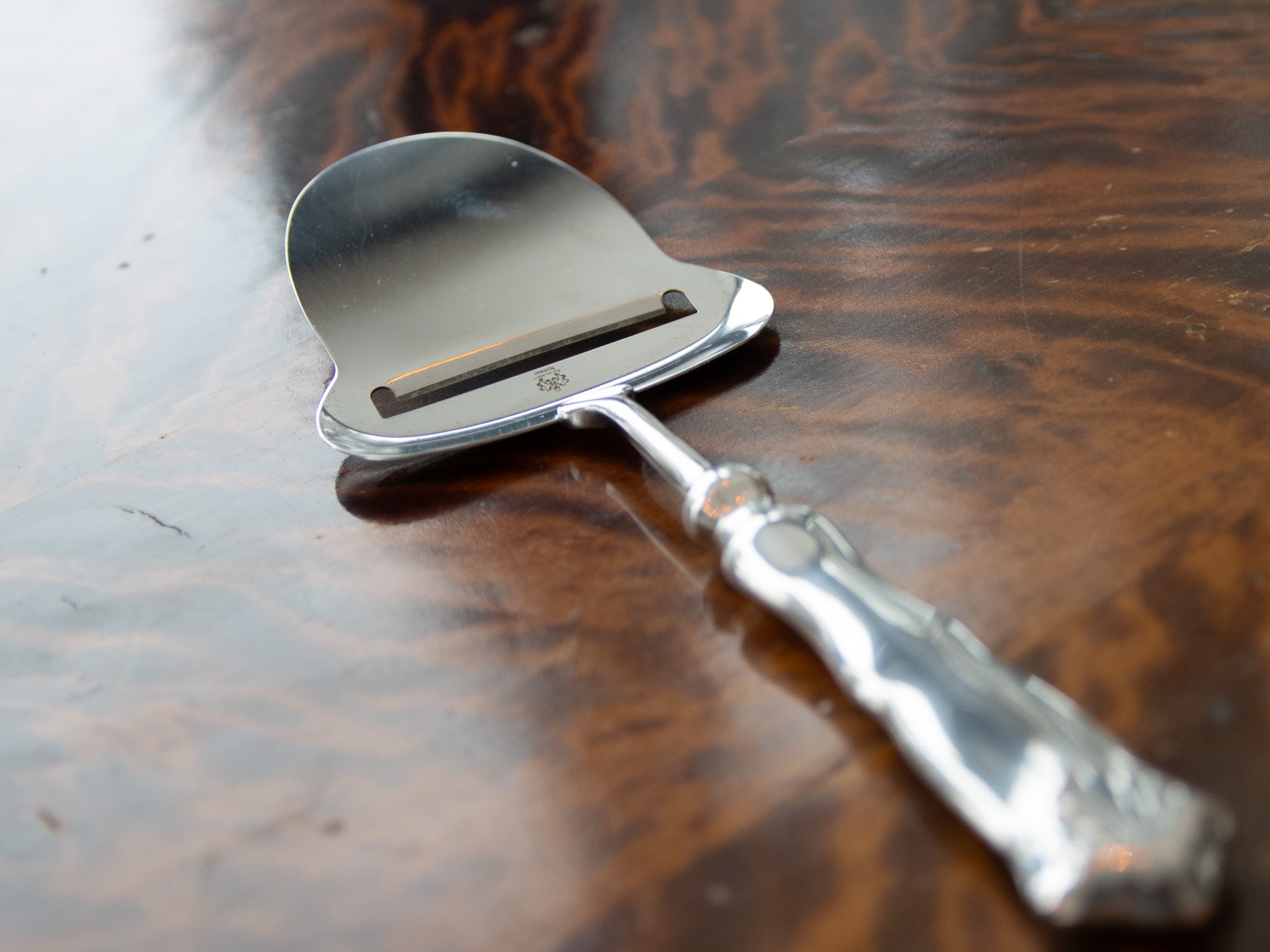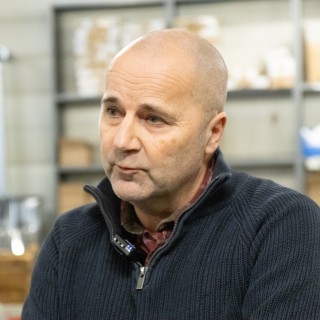Most Norwegians probably know it best under the name "cheese slicer", and for many it has a natural place on the breakfast table.
The inventor, Thor Bjørklund, was born in 1889 in Lillehammer. As a cabinetmaker, he was practically minded, but his grandchildren also describe him as a man who could go and ponder. And come up with new ideas.
– I often walked the dog down to the factory. I remember that there were always lots of papers and drawings on my grandfather's desk. There was always something they were trying to improve, says granddaughter Bodil Bjørklund.
– He had his own workshop at home where he did a lot of carpentry. He was quite handy, adds his granddaughter Hege Skikstad.
Thor Bjørklund's grandchildren believe that he would have been proud of the fact that the cheese slicer has gained the popularity and status it has today. But they believe that it was not recognition that drove him.
– He probably thought it was nice, but he didn't make a big deal out of it, says Hege Skikstad.
– His driving force was to develop things further, adds Bodil Bjørklund.
At the age of 16, the cabinetmaker built his first organ. He has also built a piano and a sofa that are still in use. In the living room at Hege Skikstad's house, his grandfather's dining table and chairs are still in use.
Inspired by tools
One thing that annoyed Thor Bjørklund was that it could be difficult to cut the cheese neatly when using a regular knife.
– He was annoyed by how people were cutting the cheese, that it wasn't cut straight. That was probably why he wanted to find a better way to do it, says Hege Skikstad.
– In addition, times were tough for many, so he wanted to find something that would make people save on cheese and not have to throw away so much, says Bodil Bjørklund.
Thor Bjørklund was inspired by one of the tools he used as a cabinetmaker, the plane. Although the invention was described as "Knife for cutting cheese" in the patent documents, it is clear that it was the plane that was the inspiration.
– "A knife for cutting cheese and the like of the kind that acts like a planer, where the cutting edge is formed by cutting out and bending down one edge of a slot in a plate-shaped part, characterized in that the cutting edge, which in a manner known per se runs transversely to the shaft, is arranged close to the shaft's attachment and that the portions of the plate-shaped part located at both ends of the cutting edge are elastic and flexible, in order that the knife will lie well in contact with the cheese, even if the angle of the shaft in relation to the surface of the cheese changes during cutting."
He adapted the function of the grater to a tool for cheese, and the result was the world's first cheese grater. In 1926 he was granted a patent, with a priority date of February 27, 1925.
Bjørklund subsequently received a couple of additional patents for further developments of the cheese grater, and a patent for a method for manufacturing cheese graters.
Thor Bjørklund had his invention patented in several countries, but still experienced that others tried to copy the product, both in Norway and abroad.
Still produced in Norway
The cheese slicer eventually became a success, and 60 million cheese slicers were soon made in Norway.
Thor Bjørklund started producing cheese slicers in Lillehammer in 1927. As demand and sales increased, production moved from rented premises to his own factory premises. The apartment blocks that now stand on the old factory site have been named Bjørklundgården.
Bjørklund's patent expired in 1942, after 17 years.
The operation of the company Thor Bjørklund & Sønner AS was taken over by the family in the 1960s when Thor Bjørklund retired.
In 2008, the company Thor Bjørklund & Sønner AS went bankrupt, and in 2009, production was taken over by Gudbrandsdal Industrier. Today, GIAX Produksjon produces the Norwegian cheese slicers, under the name Bjørklund1925.
– It is somewhat honorable to manage something that has been given the status that it has in Norway. There is only one “Bjørklund1925”. That is the one we produce and which is the original.
Lars Jorgen Jensen
Today's cheese slicer produced in Ringebu is not very different from the one Thor Bjørklund patented in 1925.
– The concept is built in the same way as a hundred years ago. It has the same components: blade, pliers with pin and handle, says Jensen
The factory now produces around 200,000 cheese graters annually. Although the product is the same, a lot has changed in the way the cheese graters are made. In the 1920s, more was done by hand than in today's factory.
Around 40% of what is produced at Ringebu is sent abroad. The Netherlands is the country outside of Norway where the most cheese slicers are sold.
– They have almost the same attitude towards the cheese slicer as we do here. Sometimes we have to explain to Dutch people who come to our shop that the cheese slicer is a Norwegian invention.
In addition, many cheese slicers are exported to South Korea, where brown cheese has become trendy in recent years. Together, Tine and Synnøve Finden sold almost 100 tons of brown cheese the first year after they started exporting there in 2019.





